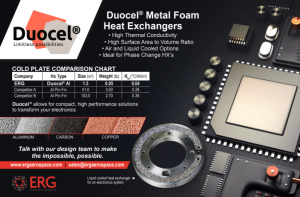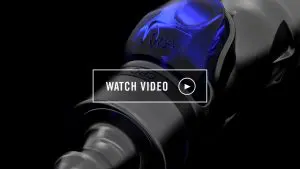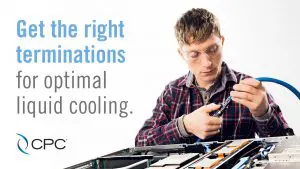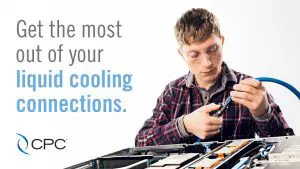Introduction As power-component technology advances and smaller packaging is required, thermal-management issues threaten to limit the performance of devices. As power dissipation rises, the inability to cool them may force designers to de-rate the devices’ performance by reducing current or switching speed and/or employing higher-voltage devices that are less efficient and … [Read more...]
Utilizing Laser Flash in Combination with Finite Element Modeling to Analyze Thermal Conductivity of Interfaces and Layers within Complex Structures
Abstract The utility of the laser flash thermal conductivity measurement can be greatly expanded to more complex structures by modeling laser flash results using Finite Element Models. This approach is illustrated using a test fixture with 4 heat sinks, where heat spreading is a significant factor. If traditional 1D thermal diffusion models for laser flash are used, thermal … [Read more...]
The Liquid Cooling Fluid Connector of the Future
Sponsored by CPC Introducing the liquid cooling fluid connector of the future: the PLQ2. This revolutionary new connector is made from a high performance thermoplastic that offers a host of benefits including: freedom from corrosion, compatibility with engineered cooling fluids and drip-free disconnects. Once you see what the future looks like, you’ll never turn … [Read more...]
Get the Right Terminations for Optimal Liquid Cooling
Sponsored by CPC Due to the demand of liquid cooling connections in high performance computing, many engineers are now looking to find the right components that facilitate optimal cooling. The foundation begins with the combination of the right termination and connection. Read our case study on how to ensure you’re getting the right termination for a leak-free HPC … [Read more...]
How to Get the Most Out of Your Liquid Cooling Connections
Sponsored by CPC Connectors are crucial to the safe and reliable operation of liquid cooling systems. However, considerations such as space constraints, required force-to-connect and ease of use are components that are often overlooked. We break down the characteristics and performance parameters that are needed to ensure you get the right connection each and every … [Read more...]










